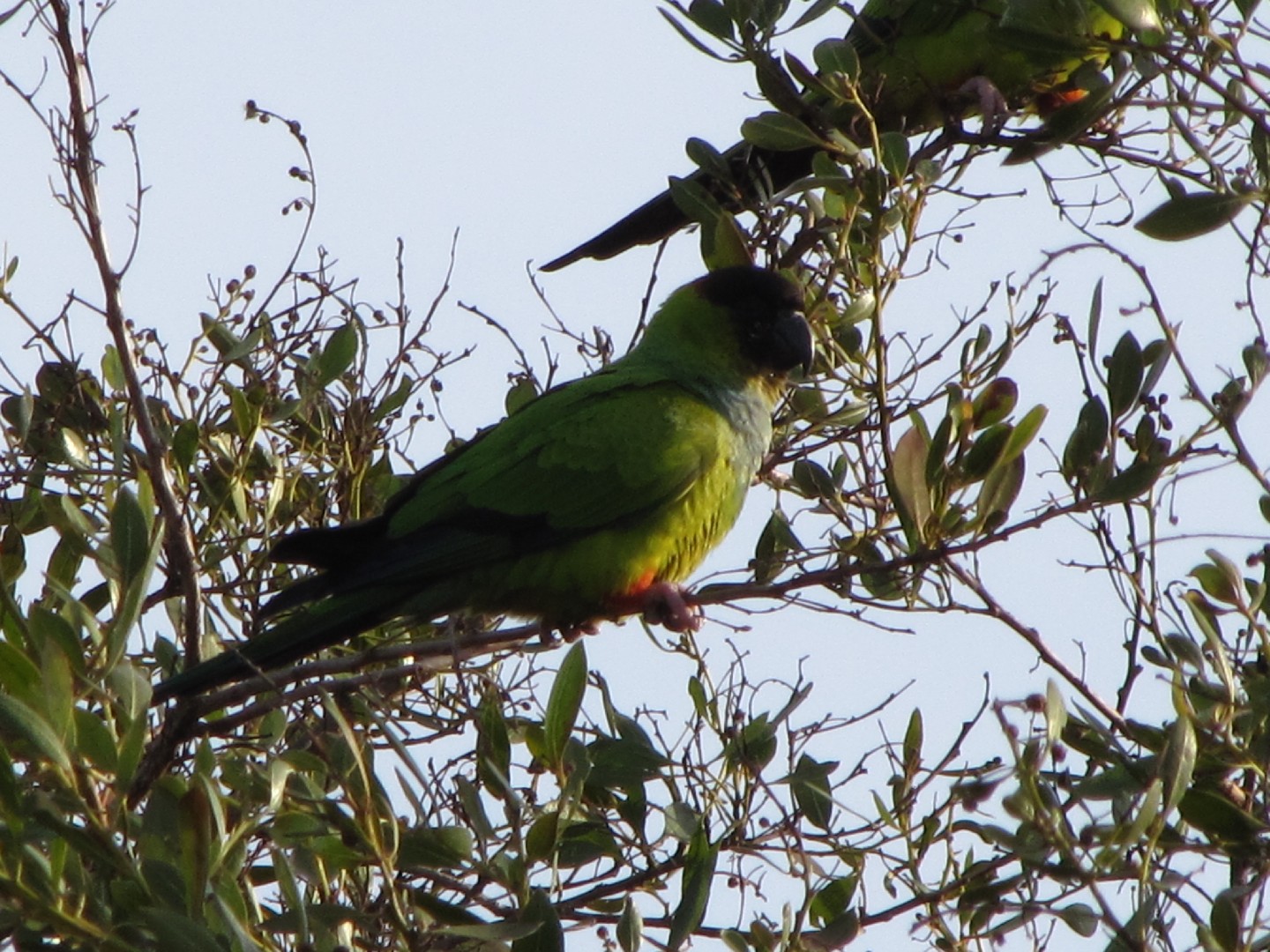Nanday Parakeet
A species of Nandayus Scientific name : Aratinga nenday Genus : Nandayus
Nanday Parakeet, A species of Nandayus
Botanical name: Aratinga nenday
Genus: Nandayus
Content
Description General Info
Description
The nanday parakeet is 27–30 cm (11–12 in) long, weighs 140 g (4.9 oz), and is mostly green in color. Its most distinguishing characteristic, for which it is named, is its black facial mask and beak. It also shows black, trailing flight feathers on its wings and has a long tail edged at the end in blue. The upper chest is bluish-green and the lower chest is a paler green. Feathers covering the thighs are red. 
Size
23 - 41 cm
Life Expectancy
18.7 years (wild), 30.2 years (captivity)
Nest Placement
Cavity
Feeding Habits
Nanday Parakeet primarily feasts on seeds, fruit, palm nuts, berries, flowers, and buds. It forages in groups, adept at exploiting various food sources, showing a particular preference for certain seeds and fruits depending on seasonal availability.
Habitat
The nanday Parakeet is commonly found in environments ranging from scrub forests to forest clearings, often in the vicinity of human settlements. This species thrives in both open savanna regions and lands with Copernicia palms. It is well-adapted to a variety of landscapes including pastures, stockyards, farmlands, campos, and wetlands, predominantly occupying areas with an altitude below 800 meters. Nanday Parakeet exhibits a preference for low, moist habitats within broader geographical regions that encompass these diverse ecological zones.
Dite type
Omnivorous
General Info
Feeding Habits
Bird food type
Distribution Area
The species is native to South America from southeast Bolivia to southwest Brazil, central Paraguay, and northern Argentina, from the region known as the Pantanal. Caged birds have been released in some areas, and the birds have established self-sustaining populations in Los Angeles, California, San Antonio, Texas, and several areas of Florida (including Pasco, Sarasota, Pinellas, Manatee, Broward, and Miami-Dade Counties). 
